I might as well add my 2 cents' worth to the list. I am certainly not the expert here, but I have some basic steps that I have used which may be of interest to the newbies just getting started. There are dozens of good ways to wire up your layout, and even though I enjoy it, I also get impatient about getting it done. Pay more attention to making good connections than to making it pretty. After awhile, you'll be able to do both.
There are some great examples of planning you wiring, as shown above. I even used Visio to draw a plan to stage roughly where my wiring will go. You can do the same thing just drawing it out with pencil and paper - no need to be this fancy. This is a star wiring pattern for the track power, using terminal blocks at the junctions for distribution. You can do one for switch power, or lighting, or other special needs. Mapping it out first makes it easier when you're crawling around under the layout.

Tip - after you've built the table framework, drill holes through the supports (at least 3/4" diameter) before attaching the top. Imagine where you think alot of wires will go, and drill a "path", including other feeds that you think you might need. It's okay if you end up not using the holes.
If you don't want to spend the time drilling, use cup hooks as you wire (or put them in instead of drilling holes.)

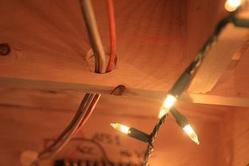
I found an easy way to get some lighting under the layout - a clear Christmas tree light set. These or LED's would work.

Or I found a great way to see what you're doing under there - a head light, several styles available at any home improvement store. They're cheap. Battery powered triple A's last forever with these LED lights. Yes, maybe a little uncomfortable, but it's easy to slip and off but well worth it. The light housing is adjustable to aim at where you're looking.
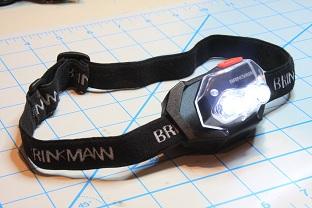
I will leave the wire size and type selection up to you, or look for some good recommendations from the forum members. I found out that the easiest colors to get in a hurry from Radio Shack or your LHS in case you run out is black, red, green, and white. Although it can't show specific hookups once you're under the table, you can still do a color code that has worked well for me.
I used black & red for track power only:
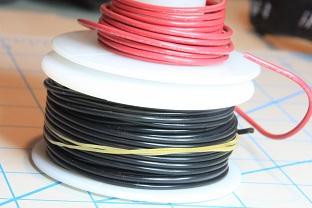
Black & green for switch power only:
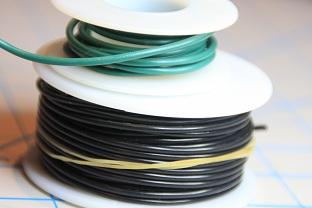
Red & green for accessories:

Then by adding a white wire into the mix, several more combinations are available. It's easy to narrow down the wire functions in a bundle when you're under there crawling around.
Other useful items to make the job less agonizing are ty-raps, splices (also buy a crimper if you don't have one - they're cheap), and/or terminal blocks for distribution points.
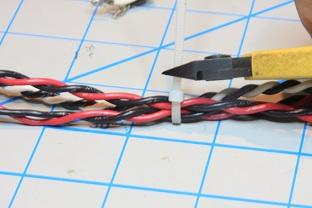
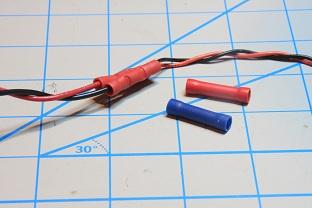
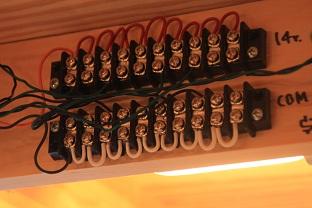
Home improvement stores carry these, but if you have a chance to order some before you start, get the ones with a square plate under the screw head that will capture a bare wire. It's so easy to strip the wire, stick it under the plate on either side of the screw, tighten down the screw, and you're done in no time. You will also see in the photo that I made a bunch of jumper wires, but that takes time. Instead, use jumper tabs, available from the same place as the terminal blocks. I have used MCM Electronics, but they're available at many electronic parts store websites, like Digi-key, Mouser, etc.
I mentioned the cup hooks earlier - they are good for when you're initially running your wires, and you're not sure the route you choose will be the final one. Just drop the wires into the cup hooks and keep going until you're done - it's easy to pick them out of the loose bunch to move them later, and if you want it to be pretty under there, use ty-raps on the bundles once everything is finalized.
When you're finished it should look like this:
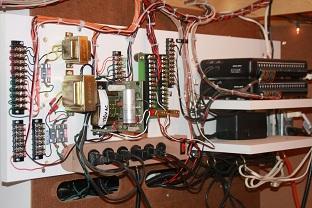
Ha Ha. I spent many years wiring electronic and electrical components, so I've had some practice. Maybe this will help give you some ideas on how to straighten up your wiring if you want it to look nice. It makes it so much easier to work on when you want to add things or change wiring configuration later. Some people don't want to spend the time making it pretty, which is totally understandable. I mean, how many guests have asked to crawl under your table and look at your wiring?
Hope this helps some newbies to get started.
Mike






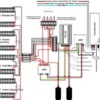
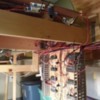












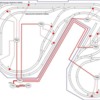
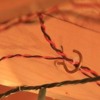



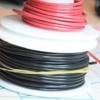
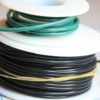
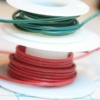




![Bridle-Ring-with-Screw[2] Bridle-Ring-with-Screw[2]](https://ogrforum.ogaugerr.com/fileSendAction/fcType/0/fcOid/21703120922174114/filePointer/21984675534764108/fodoid/21984675534764104/imageType/MEDIUM/inlineImage/true/Bridle-Ring-with-Screw%255B2%255D.jpg)
![Bridle-Ring-with-Screw[2] Bridle-Ring-with-Screw[2]](https://ogrforum.ogaugerr.com/fileSendAction/fcType/0/fcOid/21703120922174114/filePointer/21984675534764108/fodoid/21984675534764104/imageType/SQUARE_THUMBNAIL/inlineImage/true/Bridle-Ring-with-Screw%5B2%5D.jpg)
